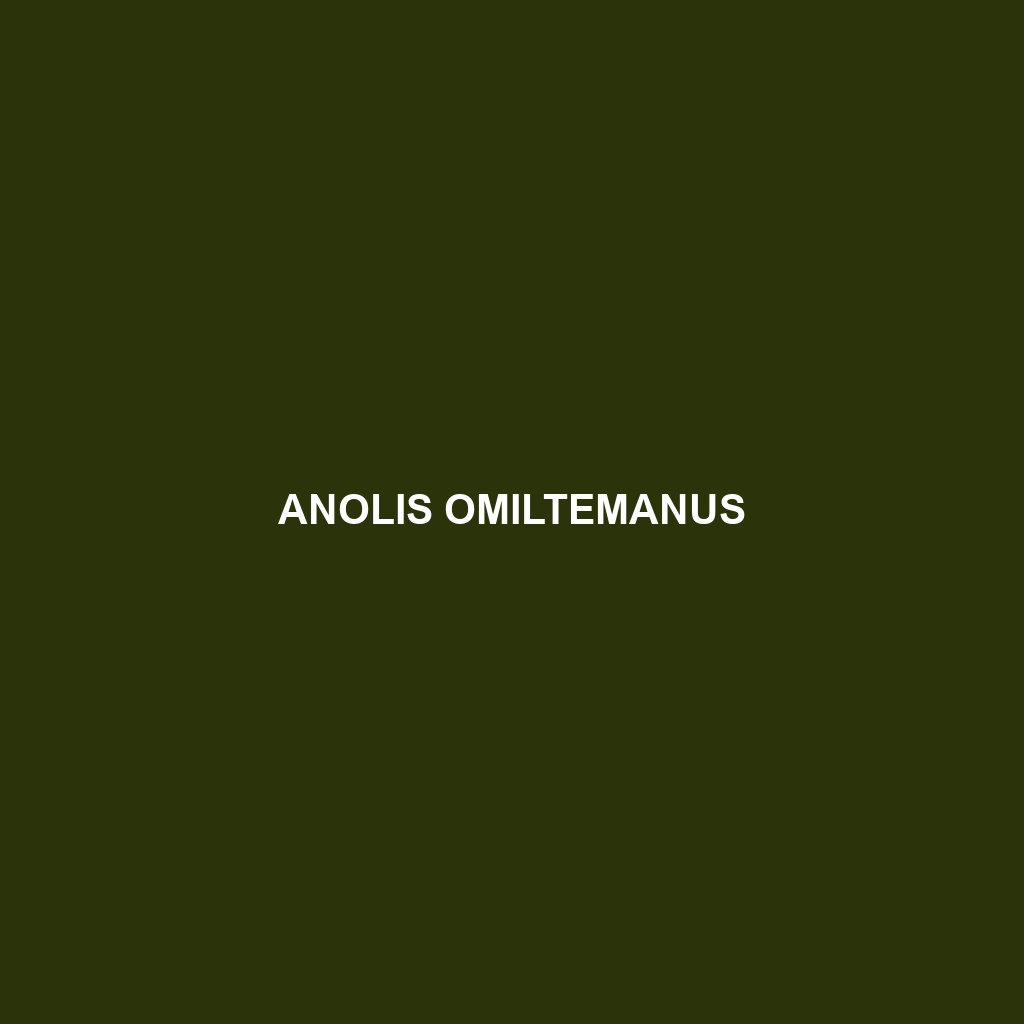Species Description of Anolis omiltemanus
Common Name: Anolis omiltemanus
Scientific Name: Anolis omiltemanus
Habitat
Anolis omiltemanus primarily inhabits the tropical regions of Mexico, particularly in the Sierra Madre del Sur of Guerrero. This species is often found in humid, forested areas where it can utilize the abundant vegetation for camouflage and hunting. The preferred habitats include cloud forests and montane rainforests, where temperatures and humidity levels support its biological needs.
Physical Characteristics
Anolis omiltemanus typically reaches a length of about 6-8 inches, including the tail. This lizard displays a vibrant coloration that can vary significantly depending on the environment, with hues ranging from green to brown with striking patterns. Its slender body and long limbs allow it to maneuver easily among the branches. Distinctive features include a pronounced dewlap, which males use during territorial displays.
Behavior
This species is diurnal, meaning it is most active during the day. Anolis omiltemanus is known for its agility and ability to climb, often seen basking on leaves or branches. Males are territorial and perform elaborate displays to attract females, including push-ups and dewlaps extensions. They are also known to exhibit behavior such as tail waving in response to threats, an adaptation that enhances their survival.
Diet
Anolis omiltemanus primarily feeds on a variety of small invertebrates, including insects like crickets, ants, and moths. Its diet is crucial for controlling pest populations within its habitat, and it displays a hunting strategy that involves quick, agile movements to capture prey. This lizard also consumes plant material occasionally, adding to its diverse dietary habits.
Reproduction
The breeding season for Anolis omiltemanus typically occurs during the warmer months, where males engage in vigorous courtship displays. Females lay clutches of eggs in protected locations within leaf litter or under stones, often producing 2-3 eggs per clutch. The incubation period lasts approximately 6-8 weeks before hatchlings emerge, usually around the same size as adults but with different coloration.
Conservation Status
Anolis omiltemanus is currently listed as “Vulnerable” on the IUCN Red List due to habitat loss from deforestation and agricultural expansion. Conservation efforts are crucial to protect its natural habitat and ensure the survival of this unique species.
Interesting Facts
One fascinating aspect of Anolis omiltemanus is its ability to change its color based on environmental factors, a trait that aids in camouflage and thermoregulation. Furthermore, it plays an essential role in local folklore, often symbolizing adaptability and resilience within indigenous cultures.
Role in Ecosystem
Anolis omiltemanus plays a vital role in its ecosystem as both a predator and prey species. By controlling insect populations, it helps maintain the ecological balance. Additionally, it serves as food for various birds and larger reptiles, illustrating the interconnectedness of its habitat’s food web.
